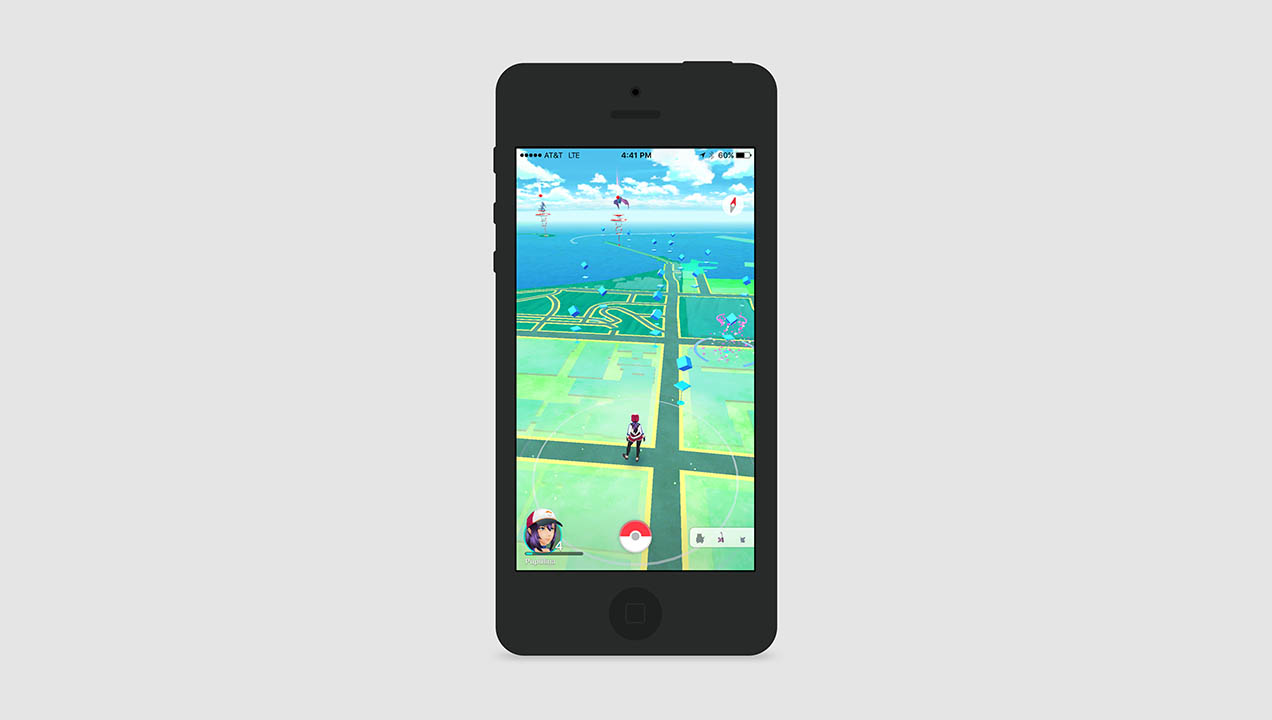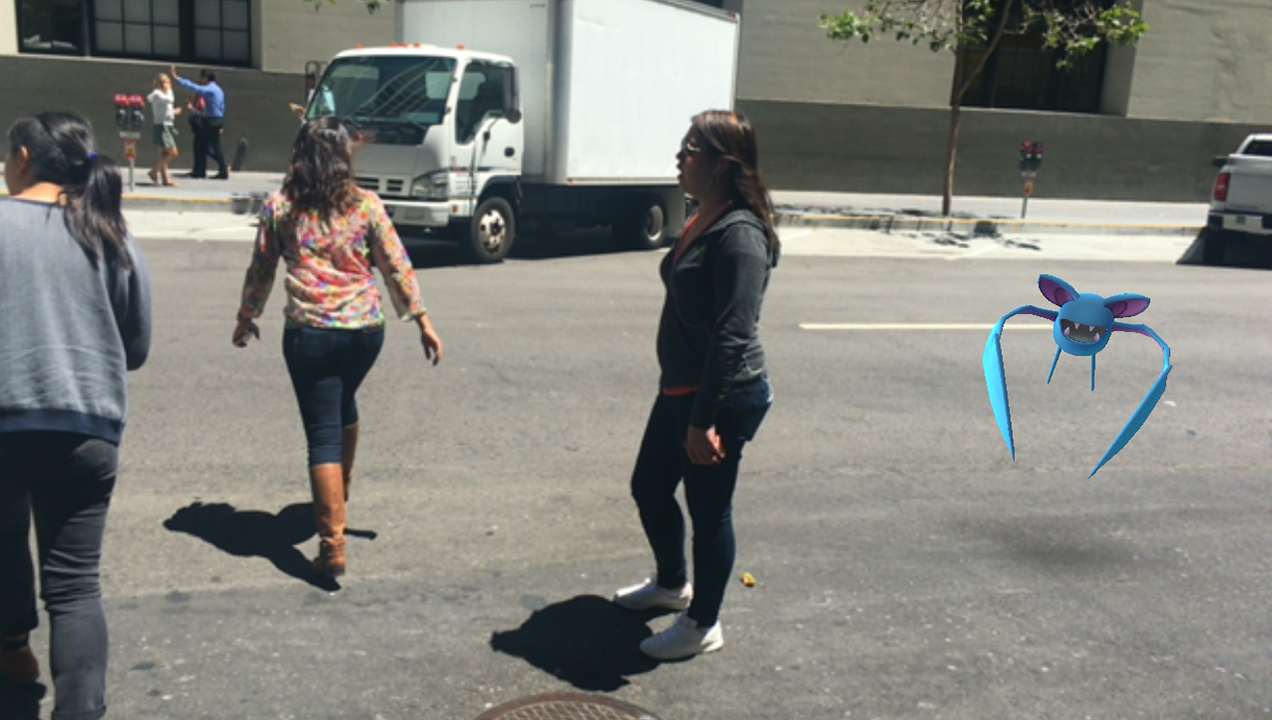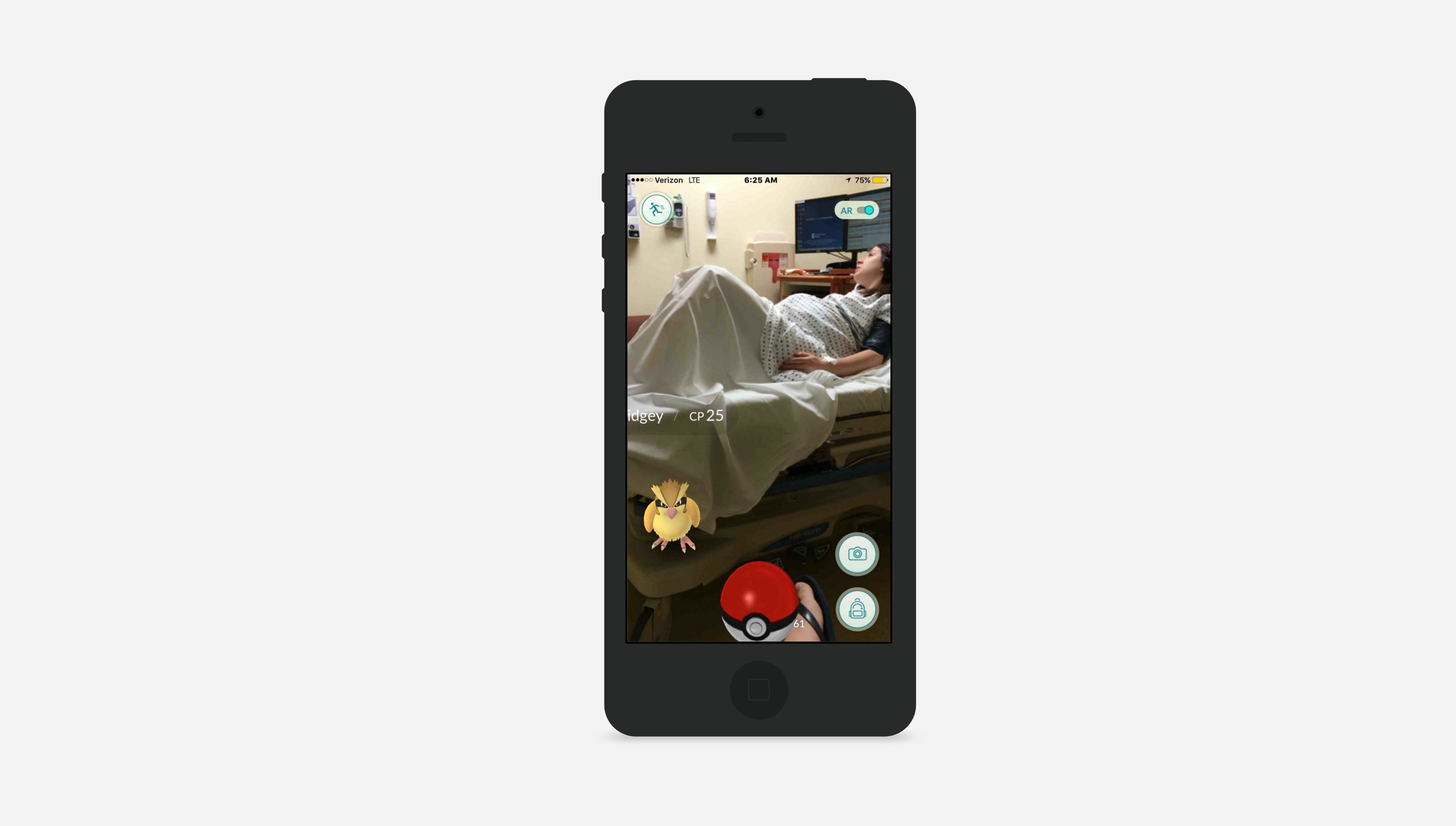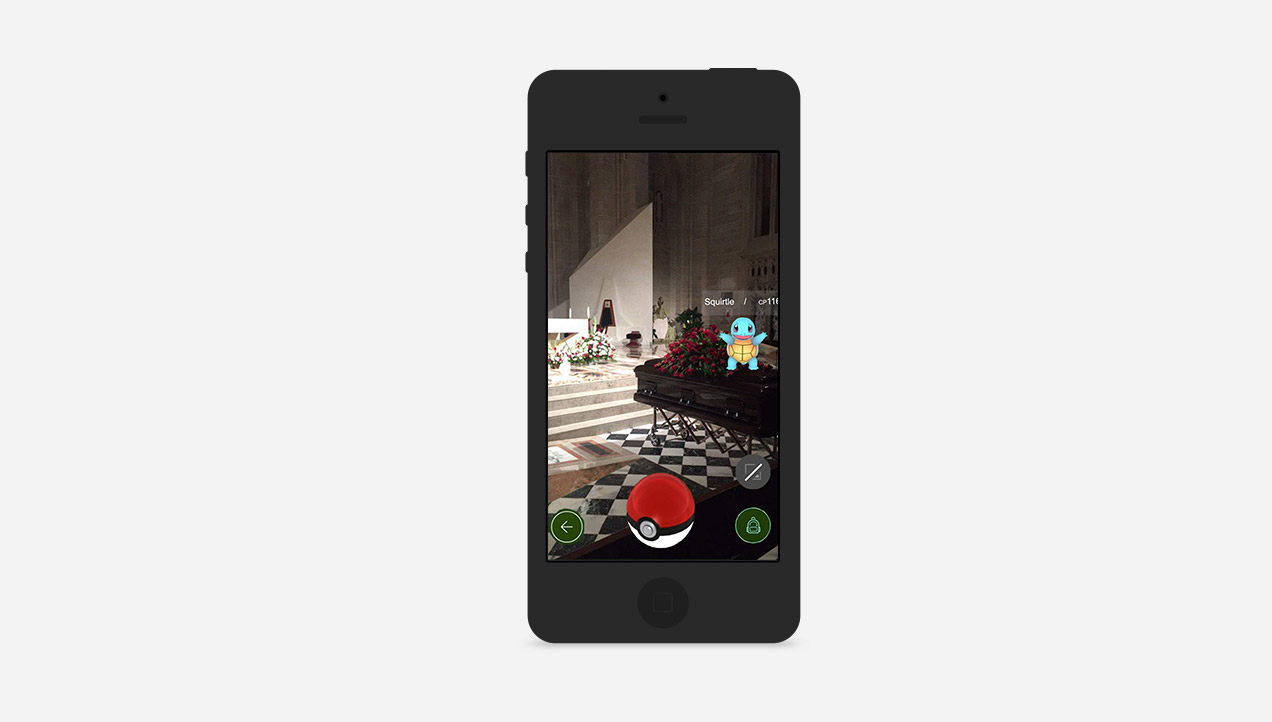The creative friction of Pokémon Go
Why the game is a meaning-making machine
The Pokémon are here – and nothing will ever be the same. Children’s parks in otherwise quiet suburban neighborhoods have been commandeered by loud, jostling crowds of up to a thousand, playing the runaway hit mobile game Pokémon Go game until the early morning hours.
Absorbed in their hunt for digital critters, players have also wandered into traffic, fallen off cliffs, crashed into police cars, trespassed onto neighbors’ lawns (and an Indonesian military base), and even stumbled upon a dead body. In a metric of debatable relevance yet undeniable impressiveness, Pokémon Go is poised to surpass Twitter in terms of daily active users and has been downloaded by millions. Soon the only tweets you’ll hear may be out of a Pidgey.
How catching Pokémon captured our imagination
Amid the mayhem, it’s easy to forget that it’s been hardly a month since Pokémon Go, available on Android and iOS, began rolling out in select markets across the globe. Yet in this short period of time, the game has achieved full on Pop Culture Phenomenon status. And like all true pop culture phenomenons, it is buoyed by the fickle tides of media hype and popular opinion, but also by an intrinsic force, a magnetic quality that draws us in and makes us ask each other the big questions: who we are, what technology can do, and whether or not this is unequivocal proof that so-called Millennials are, in fact, an utterly hopeless generation of screen-staring layabouts.
The game itself is simple: find and capture as many Pokémon, fantasy creatures based on a massively popular 1990s gaming and entertainment franchise, as possible, then battle other players to increase the strength of your brood. Yet there are other features which, when combined, have proven to be a combustible mix. These include rampant nostalgia (Pokémon was a mainstay of childhood in the ‘90s), physical exploration (the game uses GPS to overlay the Pokémon world on actual city streets, and requires players to physically travel to different locations), and a taste of augmented reality (the Pokémon appear set against real world surroundings). The result has been a kind of feverish mania that haunts our newsfeeds and spirits the 20-somethings in our lives away to mysterious “late night walks”.

A San Francisco neighborhood transforms into a gamified grid through the players eyes
Indeed, the only thing more ubiquitous than the Pokémon themselves (watch out for that Zubat, it’s right behind you!) are opinions about Pokémon Go, and fairly sensationalist ones at that. Some people extol the game as a panacea that inspires players to exercise, explore their neighborhood, and even improve mental health: a positive reassessment of stereotypes that portray videogame play as a sedentary and isolating pursuit. Others herald it as the first true consumer inroads of augmented reality. Critics, for their part, tend to wave it off as the latest fad, though some Muslim clerics have gone so far as to call for it to be banned outright on the grounds that it promotes gambling, evolution and polytheism. At our offices in both San Francisco and London, Pokémon Go has been enthusiastically embraced by the more junior team members, who boot up the game to pass time on otherwise tedious bus commutes, or slip in a quick session in on a lunch break. Anyone on the team who’s over 35 on tends to look on with tolerant puzzlement.

Sometimes socializing in the great outdoors can mean we’re still glued to our screens.
A tale of two augmented realities
The game’s augmented reality (AR) feature in particular has drawn considerable attention. Like many very new technologies, we don’t quite know what to make of AR at the moment, and are torn between hype and hesitation. That ambivalence played a key role in the story of an early AR device, Google Glass. Shaped like a streamlined pair of eyeglasses, Google Glass combined a head’s up display (tiny screen) with natural voice technology, allowing wearers to search the Internet and communicate with Glass by speaking aloud. For example, users can state an address, then look through the head’s up display for turn-by-turn directions. En route, the wearer can receive notifications from email and other apps, and reply by voice. Google Glass was sleek, futuristic, understated – and a dramatic failure. Glaringly, the design didn’t communicate when the glasses were actively recording, sparking concern that people could be publicly videotaped without their knowledge or consent. Those wearing the device were promptly derided as “glassholes”, arrogant tech snobs with no respect for people’s privacy. Amid mounting public and legislative outcry, Google discontinued sale the device in 2015, after just a year on the market.
When you compare the gameplay in Pokémon Go to the experience portrayed in the Google Glass video above, the main usability components are fairly similar. A device (smartphone, Google Glass) maps a layer of digital content onto physical surroundings, one which the user can actively engage with (both tools provide the option of taking photos, for example). But the deeper user experience – the wellsprings of the human condition that the applications draw upon, the way they reverberate across our lifestyle – couldn’t be more different.
Google Glass is essentially an extractive facilitator. It smooths our path through the world, mining it for data and converting it into action items. Through this alchemy, streets become optimized routes from A to B; posters advertising an upcoming concert are calendar events in the making; sunsets are streaming-ready. Knowledgeable and discreet, Google Glass makes reality more legible, enhancing it along the way with useful digital annotations.
Pokémon Go is the exact opposite: it is an additive obstructor. It injects itself into the landscape, and forces us pause – awkwardly, in the middle of busy intersections – and linger, rather than hasten our way. And that’s when it’s working; the game is plagued with constant server crashes, and drains phone battery at an alarming rate. Pokémon Go’s augmented reality is one of excess and distortion: a leakage between digital and physical that makes reality less legible and more strange.
Having broken one of the key requirements of contemporary UX design – transparency – the game proceeds to shatter what is perhaps the cardinal principle governing design itself: thoughtfulness.
There’s more. The rules and visual elements of Pokémon Go are often stubbornly opaque, sparking a proliferation of “how to” guides ranging from the basic to the advanced. And, having broken one of the key requirements of contemporary UX design – transparency – the game proceeds to shatter what is perhaps the cardinal principle governing design itself: thoughtfulness. Pokémon Go is a gloriously, egregiously thoughtless game, as erratic and lacking in tact as your racist uncle at the family potluck. It doesn’t bother to gently and intentionally mold itself to your life, sensitive to your needs and rhythms, like the majority of apps and services promise to do today. It merely, unapologetically, is. Pokémon appear out of nowhere, with little rhyme or reason, and often in the worst of times and places. Players have chased Pokémon into cemeteries and places of worship, on the frontlines of the war with ISIS and Korea’s DMZ; at dinner dates, funerals, and during the birth of their own child.
Pokémon as provocation
Is the pursuit of these little monsters bringing out the monstrous in ourselves? Or is it that, for a change, we are being confronted with technology that does not merely mirror us, or translate us into tidy assemblages of sleep patterns, calorie intakes, and purchasing histories? Moving in their own inscrutable ways across borders between digital and physical, Pokémon deny us our narcissism, goading us instead into what anthropologist Anna Tsing calls “encounters across difference”. In her book Friction: An Ethnography of Global Connection, Tsing challenges the standard narrative of globalization as a seamless and abstract flow of information, goods, and people. For her, globalization happens at concretely localized points of “friction”: zones of awkward yet creative engagement between actors with very different goals, languages, aspirations. In Tsing’s ethnographic account, the messy and unstable moments where Japanese traders buy Indonesian trees, army officers make deals with nature lovers, and university students sit down with village elders, are “where the rubber meets the road” of cultural production and new meanings are made.
Moving in their own inscrutable ways across borders between digital and physical, Pokémon deny us our narcissism, goading us instead into what anthropologist Anna Tsing calls “encounters across difference”.

Our team braves San Francisco rush hour traffic to catch Pokémon...wherever they appear.
Our encounters with Pokémon, marked by friction, are messy and unstable too, with unpredictable outcomes that can both compromise and empower us. A week ago, players began encouraging each other to plant “lures”, which attract a high volume of Pokémon for a limited time to an area, in children’s hospitals, as a way to boost patients’ morale. Many hospitals were swift to issue warnings against the practice, which risked placing undue burden on seriously ill children with limited mobility. Other hospitals, however, are using the game under controlled conditions to motivate young patients to get out of bed and move about. Pokémon’s intrusion into the lived reality of the children’s hospital, and hospital staff’s piecemeal yet productive attempt at forging a dialogue at the intersection of danger and healing, created the conditions for completely new constellations of action and meaning.
And it’s that creative provocation, argues Virginia Heffernan in a recent LA Times op-ed, that makes the game, at its core, art: “supremely amoral, functioning like an ambitious symphony. It leads players into unfamiliar territory, making danger, competition and emotional investment in a new and phantasmagoric world compulsory, and compulsive.” You’ve been warned.



